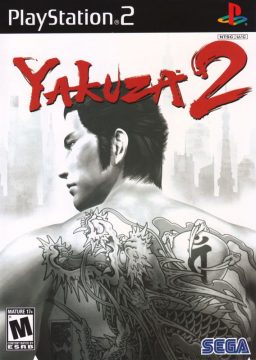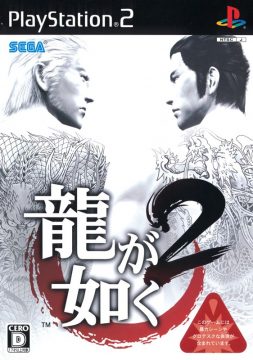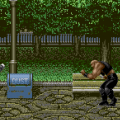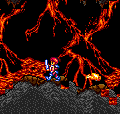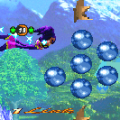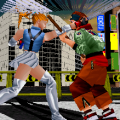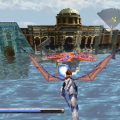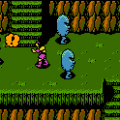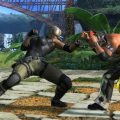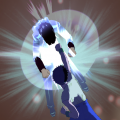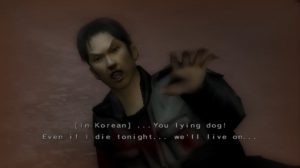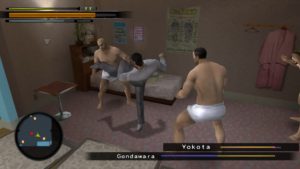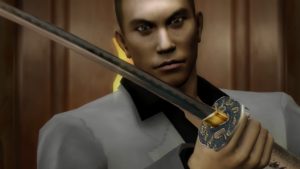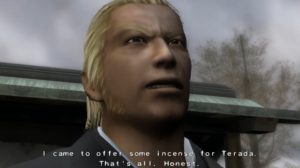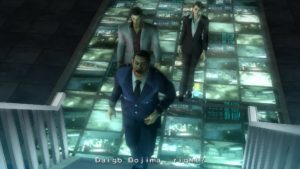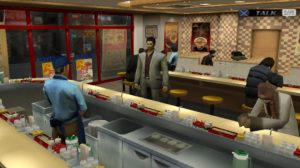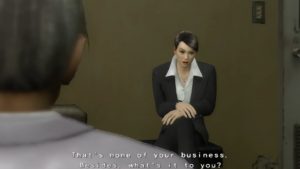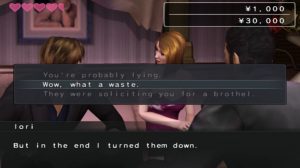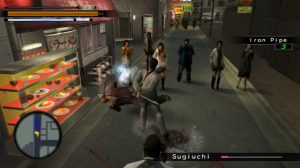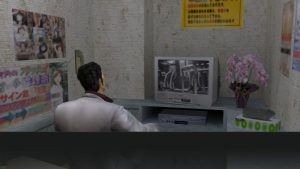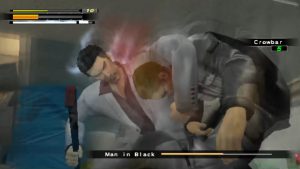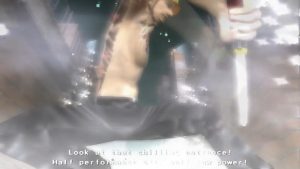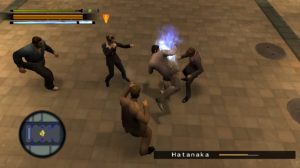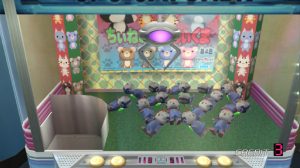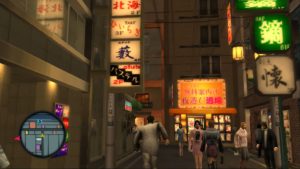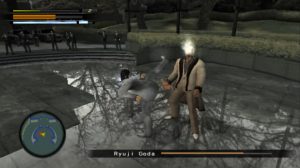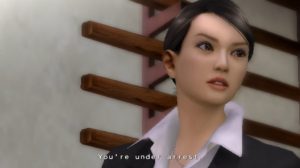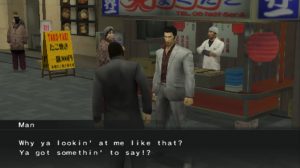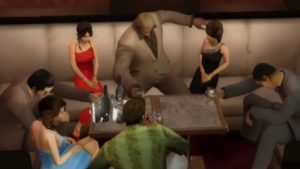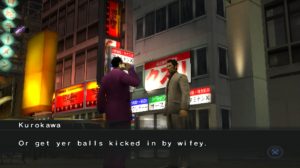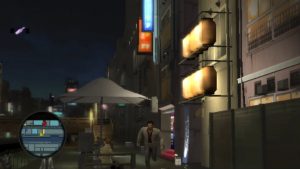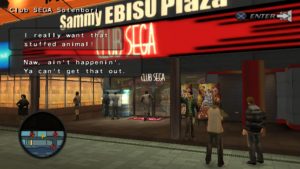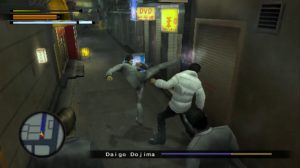Just a year later, though two for everyone else, Nagoshi and team, including a returning Hase Seishu in his final bit of work for the franchise, released Yakuza 2. This is where the real legacy of this franchise begins, and it truly sets itself apart from any and all contemporaries. Every significant flaw was addressed, new ideas were thrown on the table, and the legend of the Dragon of Dojima was truly cemented in the minds of players. Non-JP regions, however, had to put up with a release that was sub only, but with the iffy localization efforts of the previous release, still leaving in lots of unnecessary cursing, and artifacts of the old dub (like Kazama still being called Fuma). Still, even in this less then ideal form, Yakuza 2 still holds up, and perfects the foundation of the original to be the true base that the entire series would be built on.
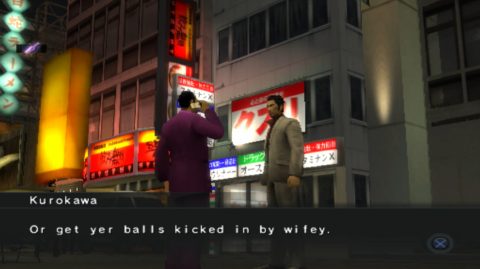
Kiryu is not doing well after the events of the first game, still having nightmares a year later. His friends and the love of his life are dead, and his father figure passed away while revealing a horrible secret to Kiryu he never wanted to know. Still, he has Haruka, and is trying to move on, having gained the title of forth chairman at the end of the last game and instantly relinquishing it to Kazama’s ally Terada, him becoming the fifth. However, Terada has come to Kiryu worried that a war with the Omi Alliance of Osaka is bubbling up, and he needs Kiryu’s help to negotiate a peace. This gets complicated by Omi assassins taking Terada out, and Kiryu stepping back into the yakuza world to try and make things right and find a sixth chairman in the son of his former boss – though some think Kiryu might have a death wish.
Things are complicated by an unexpected return. A massacre that took place twenty-five years ago, done by key members of the Tojo against a Korean group called the Jingweon mafia, is about to become significant again. The Jingweon are back, ready for some very bloody revenge, and are working with a younger Omi higher up named Ryuji Goda, the Dragon of Kansai (don’t let him hear you call him that). Ryuji wants to storm Tokyo and take over the Tojo, all while other major family heads in the Omi are making their own moves in secret in their own power grabs.
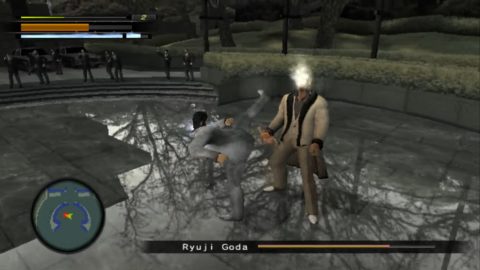
On top of all this, a young Osakan detective named Kaoru Sayama is forcing Kiryu to take her into the chaos to get info on the Tojo, who she believes made her parents vanish. Kiryu’s former detective buddy Date is being dragged back into the force to look into a possible foreign agent as well, that being made very awkward by Date doing this with his former partner Jiro Kawara, whom he saw shot some illegal aliens in cold blood. What he doesn’t know is that Kawara’s one of the few witnesses of the Jingweon massacre, and he’s ready for the coming fire. Add in Tojo unrest in the ranks via Nishiki’s bitter family, and Kiryu is looking at a firestorm of revenge that might just swallow Tokyo whole.
That’s a big plot summary, I know, but Yakuza 2‘s story is shockingly complex in structure. There’s so many moving parts and players, making it one of the most dense and fast moving plots of the entire franchise. What’s really shocking is that the game managed to juggle it all so well, nothing being difficult to understand besides the things we’re still being left in the dark over. The core focus on revenge and dark secrets helps tie everything into each other neatly, and even if you don’t quite get how every piece fits together, it’s very easy to understand the emotions and motivations of every character. The fact you have so many villains and each one manages to be a winner is truly something to be in awe over, especially the terrifying and at times sympathetic Jingweon, and the flashy Ryuji and his stupid, prideful chemistry with Kiryu.
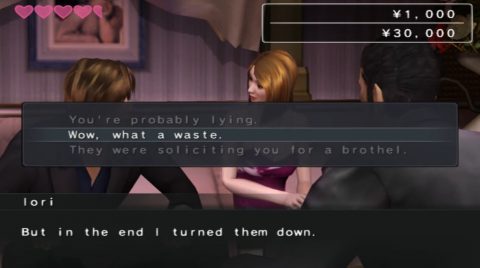
That said, one does have to bring up that the Like A Dragon developers have a bad record of portraying characters of other ethnicities. There was a good deal of this last game with the Chinese ran Snake Flower Triad, often framed as “other” by the cinematography and outfit choices (made much worse come Yakuza 3), and their boss being uniquely cruel even compared to monsters like Shimano in the Tojo. The Jingweon share the uniquely cruel foreigner issue, but compound it by a lot of the plot being based around paranoia over who’s a secret Korean in the ranks and that goes to some bonkers places. Weirdly, Yakuza 2 is one of the better entries when it comes to the writing of the female cast, the widow Dojima and detective Kaoru managing to show themselves as extremely capable. That does make it frustrating that Kaoru’s agency starts to dwindle in the later parts of the story, to the point she becomes a minor player in the wider schemes.
The gameplay has gotten some much needed tweaking, particularly crowd control in fights. Kiryu feels natural to control this time around, requiring no time to get used to any weirdness in his movement. This makes fighting fast and visceral from the start, at least within the limitations of the pre-Yakuza 5 fighting systems. There’s a greater focus on unique encounters too, like the difficult and context lacking Man in Black, or the part of the game where you fight a freaking tiger, of all things. Even the heat system is more enjoyable now that having some momentum in a fight was now easier to pull off, adding in a whole mess of new heat moves, including counters for gun using enemies.
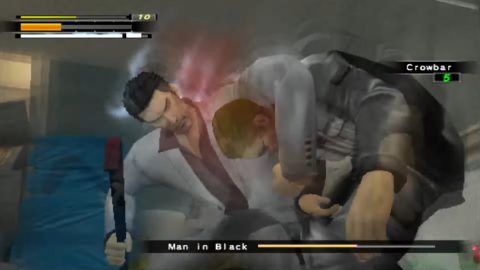
There was even an attempt to make encounters on the street more interesting, by eventually unlocking harder solo fights. Downside is that it’s poorly explained, you have to find these encounters, and if you do not, you will not have any encounters on the city map. Bring a guide for that. Equipment was better expanded upon, with a weapon shop for all your boss cheesing needs.
The improved combat makes the underground arena from the first game now a genuinely fun time and great experience grind. It was a mode located in an underground nightlife area called Purgatory filled with unique fights, but was not exactly enticing with the old battle system. With this entry tightening up the controls, it has managed to become a must play of the side stuff, and ensured the majority of future releases would have a similar mode.
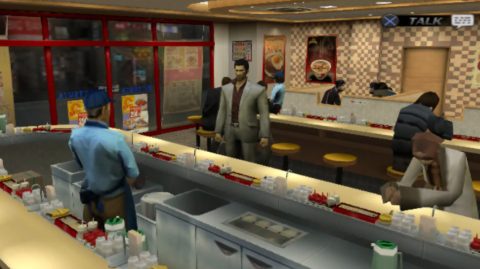
We also get our first two big side games this entry via the Marietta and Host Club Adam. The first is the introduction of cabaret club management, a series mainstay, and the weakest of the franchise. It’s more focused on running the business rather than focusing on the hostesses themselves and ends up a very lifeless affair. Host Club Adam, on the other hand, is a delightfully amusing side story that gives you the hilarious challenge of making known sentient rock Kiryu attractive to women. He has to be a host at a local club, which mostly amounts to giving satisfying conversation to the women who come to the club and hopefully convince them to buy high shelf alcohol. It’s a great use of textboxing, having a unique puzzle element of having to try and read the moods and interests of your customers to endear yourself to them, an unusual diversion even for this franchise.
There’s also an expansion on the smaller side activities, giving them more unique sub stories, and just a general increase in variety. This includes arcades, which have a unique first person battle game made for Yakuza 2 specifically (it would not be until the fifth entry that we got Sega classic arcade machines). Sub stories also getting a bump in complexity and quality, including a funny early game one about trading junk that leads to you helping a depressed man beat up a politician. The wit and off the wall nonsense of later entry substories can be seen starting to form here, alongside the all time classic of the introduction of the Gondawara family and its big baby of a boss, and that is meant to be read very literally.
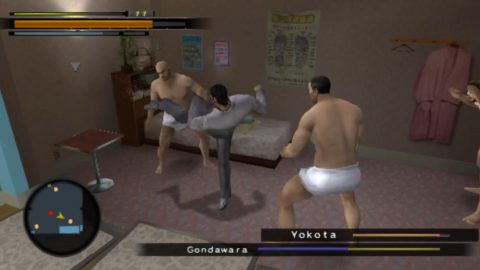
While the presentation is mostly the same (though with an additional show off scene early on where the devs show Ryuji pouring booze to show that yes, they can do liquid physics), the soundtrack is an overall improvement of familiar sounds. Push Me Under Water is a more grimy take on the old battle themes with a jazzy edge, Outlaw’s Lullaby has some killer sax, and North Menace is just genuinely one of the best battle themes in the series history. That shredding is undeniable. A Scattered Moment also deserves mention, a very unique final boss theme that relies almost entirely on the sorrowful beauty of the piano to carry the emotions.
We also have one new map in the form of Sotenbori, based on Osaka’s Dotonbori, a night life focused touristy area with a central river. It has a really unique vibe compared to Kamurocho, and a new set of minigame spots to mess with, including a large golf building. There’s even a ton out outdoor eateries, really making these streets feel a world different from Kamurocho’s more maze-like set up with its hidden urban areas. It would become one of the main maps the series would revisit again and again, playing a large role in 5 and 0, and a smaller one in the first Ichiban entry. There is also a small map of Shinseicho, based on Osaka’s Shinsekai, but that’s more there for a story beat then to be a major hub.
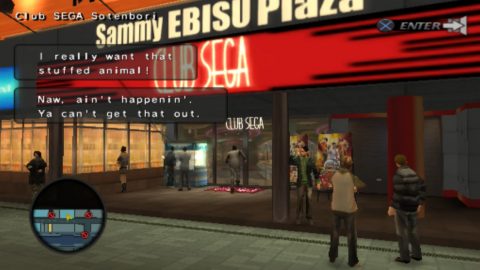
There’s not much more to say about Yakuza 2 because its sheer mass of improvements speaks for itself. It is a stone cold classic that showed how unique this franchise was and how fun it could truly be, even with the odd failed experiment like club management. As the team moves into the next gen, though, they would change tact a bit and do a spin-off before rounding out this initial Kiryu trilogy, and look to history for some inspiration. As for that third entry, it was aiming to be the thesis statement of the franchise – but the dreaded killer of all dreams, the PS3 cell processor, would make that a more difficult task then expected.
Screenshots gathered via captures of stream VODs by Commissar Bear

